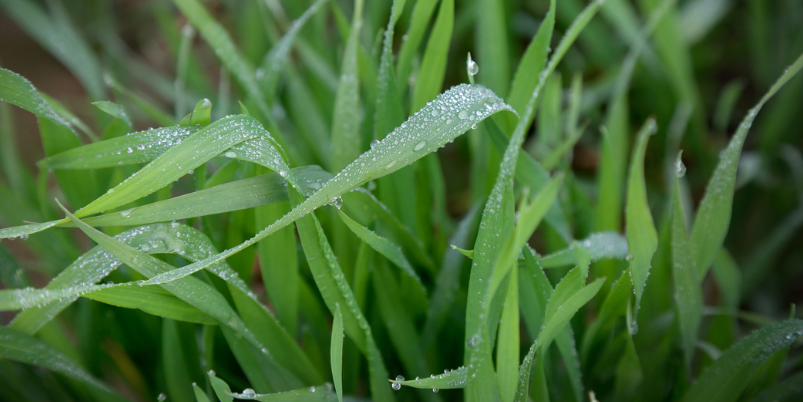Heavy rainfall can leach residual herbicides
Heavy rainfall can leach residual herbicides out of the weed zone and this has implications for weed control. It also risks crop and groundwater safety too.
For residual herbicides, your target is the soil and making sure they’re in position to be taken up by weeds that germinate in the top 5cm is crucial for effective weed control, crop safety and the environment. But heavy rainfall can cause leaching, meaning your herbicide may not provide the length of weed control you would normally expect and it may cause crop injury. Most residuals will require an adjuvant in wet soils to aid retention.
Potential impact of herbicide leaching:
- Sub-lethal herbicide concentration in the weed zone leads to poor weed control
- Herbicides move down to crop seed causing phytotoxicity
- Herbicides detected in groundwater
Residuals need rainfall to be effective, but with too much they can leach
Soil moisture is a key dependency for your residual herbicides to be effective. Only in the presence of moisture will herbicide move downwards to the weed germination zone and be taken up. Typically some rainfall will be needed to activate your herbicide and move it down. This will be approximately o.5 inches.
But with heavy rainfall after application, a high percentage of your residual herbicides can leach out of the weed zone. The problem is, residual herbicide leaching weakens efficacy. How much, depends on a number of complex factors, namely:
- Your herbicide
- Soil type


How far your herbicide moves depends on its chemical properties
How far your herbicide moves in the soil following a rainfall event depends on its:
- Water solubility – how easily it dissolves in water
- Soil adsorption characteristics – how strongly it binds to the soil
Herbicides with high water solubility and low adsorption characteristics will leach more quickly than those with low solubility and high adsorption.
Soil adsorption is the biggest factor influencing the amount of rainfall needed for herbicide activation and efficacy in the weeks following application.
The characteristics of your soil influence how far your herbicide moves
A soils texture, particle size and pH will influence herbicide effectiveness because it also dictates how far it will move in the soil.
Herbicides leach more quickly through coarse sandy soils that are low in organic matter, and more slowly through fine clay soils which are higher in organic matter. This is due to the number of adsorptive sites on the soils to bind your herbicide. Soils have a negative charge and will bind with positively charged herbicides (and fertilisers):
- Sandy soils – 1 binding site
- Loam soils – 1 – 5 binding sites
- Clay soils – about 35 binding sites


Herbicides with high water solubility & low adsorption most at risk
Herbicides that have moderate-high water solubility and have low-medium soil adsorption characteristics are most at risk of being lost from the top 5cm of the soil following heavy rainfall.
The Pesticide Properties Database on the University of Hertfordshire’s website lists water solubility and adsorption for active ingredients so you can see which are most at risk.
The risk is especially high in light sandy soils.
Chemical leaching is particularly problematic with the stacking of residual herbicides late in the autumn, when soils become saturated with prolonged spells of heavy rain.
At reduced rates, herbicide left in the weed zone may be insufficient
With herbicides leaching deeper into the soil profile you may find the concentration remaining in the weed zone is insufficient to be effective, especially if using lower herbicide rates to start with.


Worse case your herbicide may reach the crop seed & groundwater
Heavy rainfall doesn’t just impact weed control, it also has implications for crop and groundwater safety too.
The higher your active ingredient’s water solubility, the more mobile it is, and the higher the potential to seep to crop roots and beyond. It is important to bear in mind, that any herbicide damage to the crop will impact establishment.
Herbicides with high mobility and low-moderate adsorption also pose the biggest threat to groundwater, particularly in light soils. Product stewardship is crucial to mitigate risks to groundwater and prevent these actives being lost altogether.
Many herbicides need an adjuvant to help retain them in the weed zone
The risk of your herbicide leaching out of the weed germination zone is becoming increasingly prevalent with the prolonged spells of heavy rain we seem to experience around drilling. Volatile weather makes it hard for you to know if/when herbicide leaching may occur and if your herbicide will run out of steam prematurely. All herbicides will be affected to some degree by extended periods of heavy rainfall.
The easiest and most effective means of avoiding residual herbicide leaching weakening efficacy is to use a soil-acting adjuvant. Adjuvants like Backrow Max can be co-applied with your residual to retain more of it in the top 5cm of the soil for longer.


Backrow Max creates a stronger barrier to weeds in wet soils
Research shows that adding Backrow Max can hold significantly more herbicide in the top 5cm of the soil.
The research shows it is also more effective than leading adjuvant Backrow, at creating a stronger barrier to weeds.
With Backrow Max, more of your herbicide stays in the weed zone to kill germinating weeds, increasing the effectiveness of your residual herbicide application.
Backrow Max will help avoid crop damage by reducing leaching
Whilst heavy rainfall can leach residual herbicides, trials have shown how good Backrow Max is at reducing it, improving crop safety. This was put to the test with Avadex Factor in 2018. Seed was drilled shallowly and in that situation, can be damaging to wheat. The trial showed 10% chlorosis in the no disturbance plots, 20% in the cultivated plots and zero with Backrow. This has positive implications for crop establishment.
You can find out more about Backrow Max here.

Learn more about tank mix Adjuvants


They’re not all muck and mystery! Master tank mix adjuvants and you’ll be able to select the right ones so you can push your pesticide performance to the max.
Learn more







